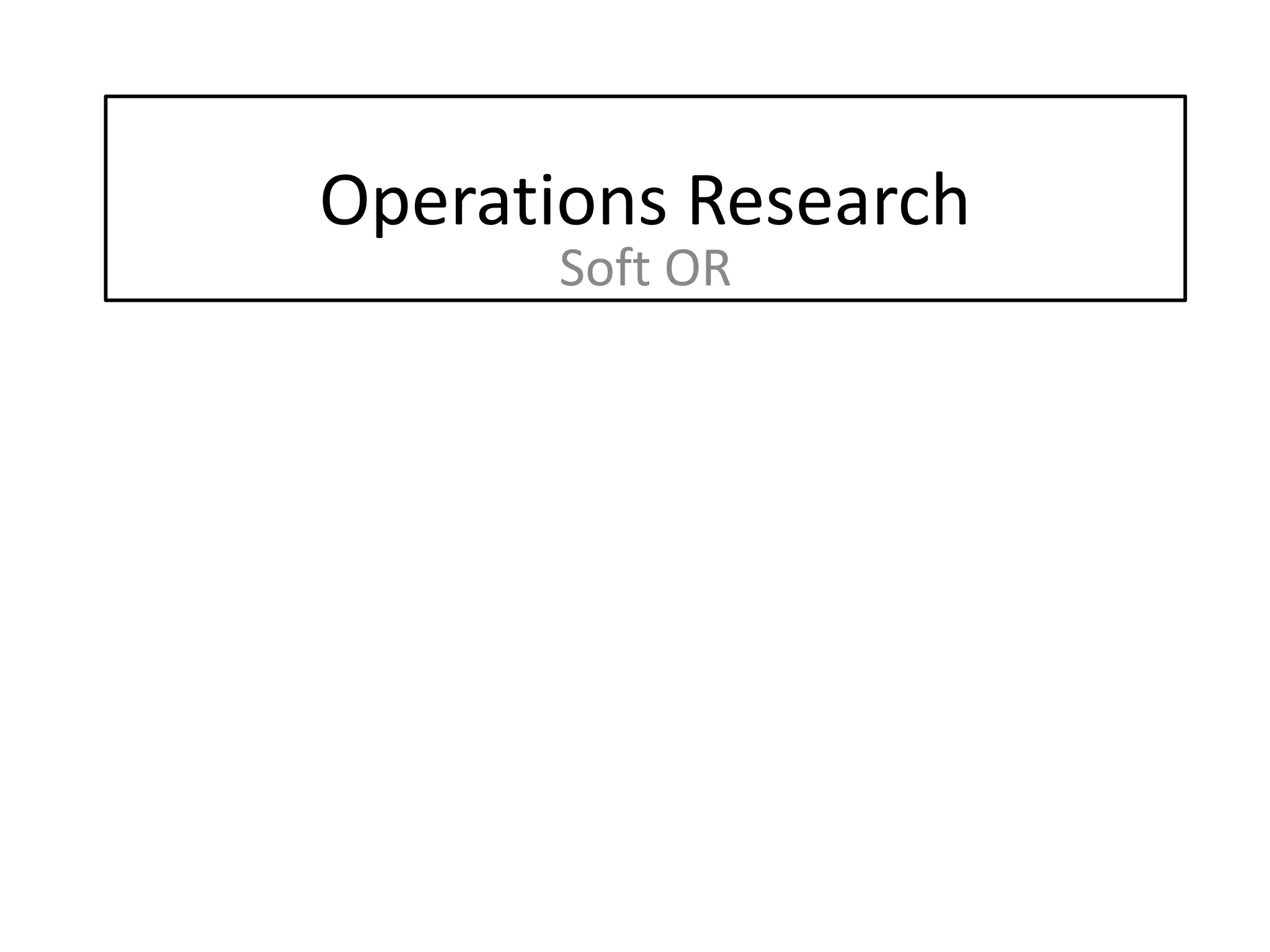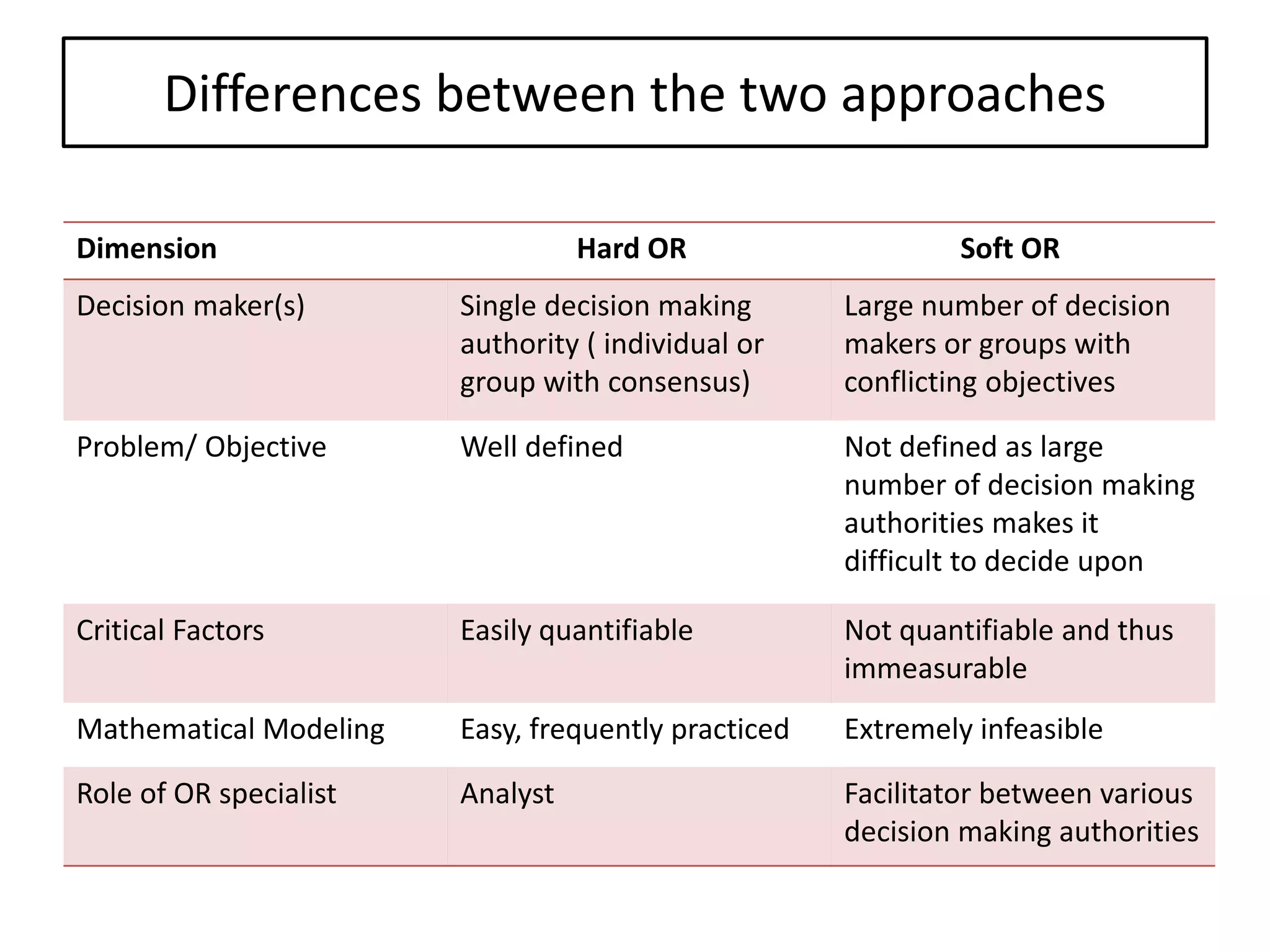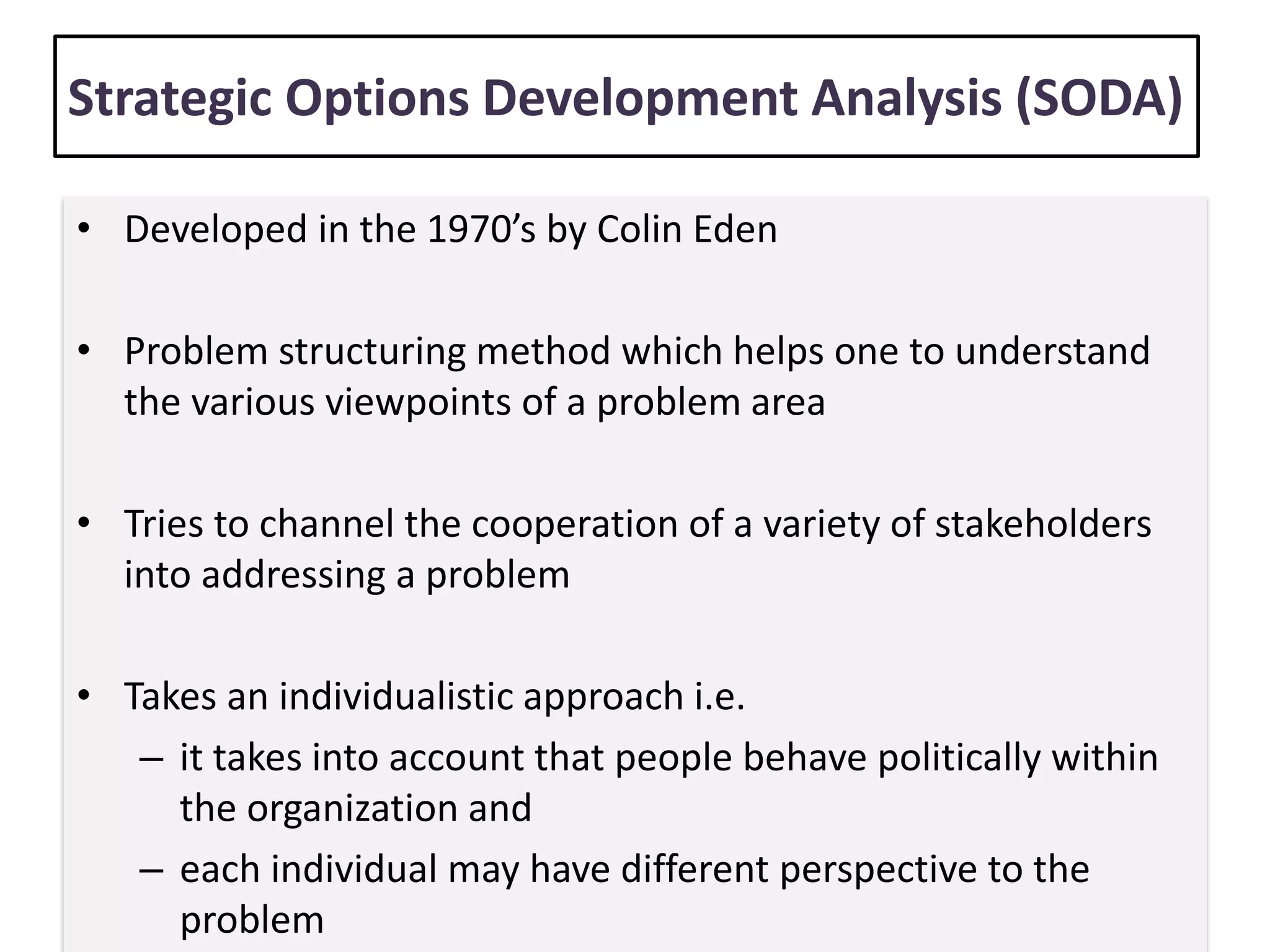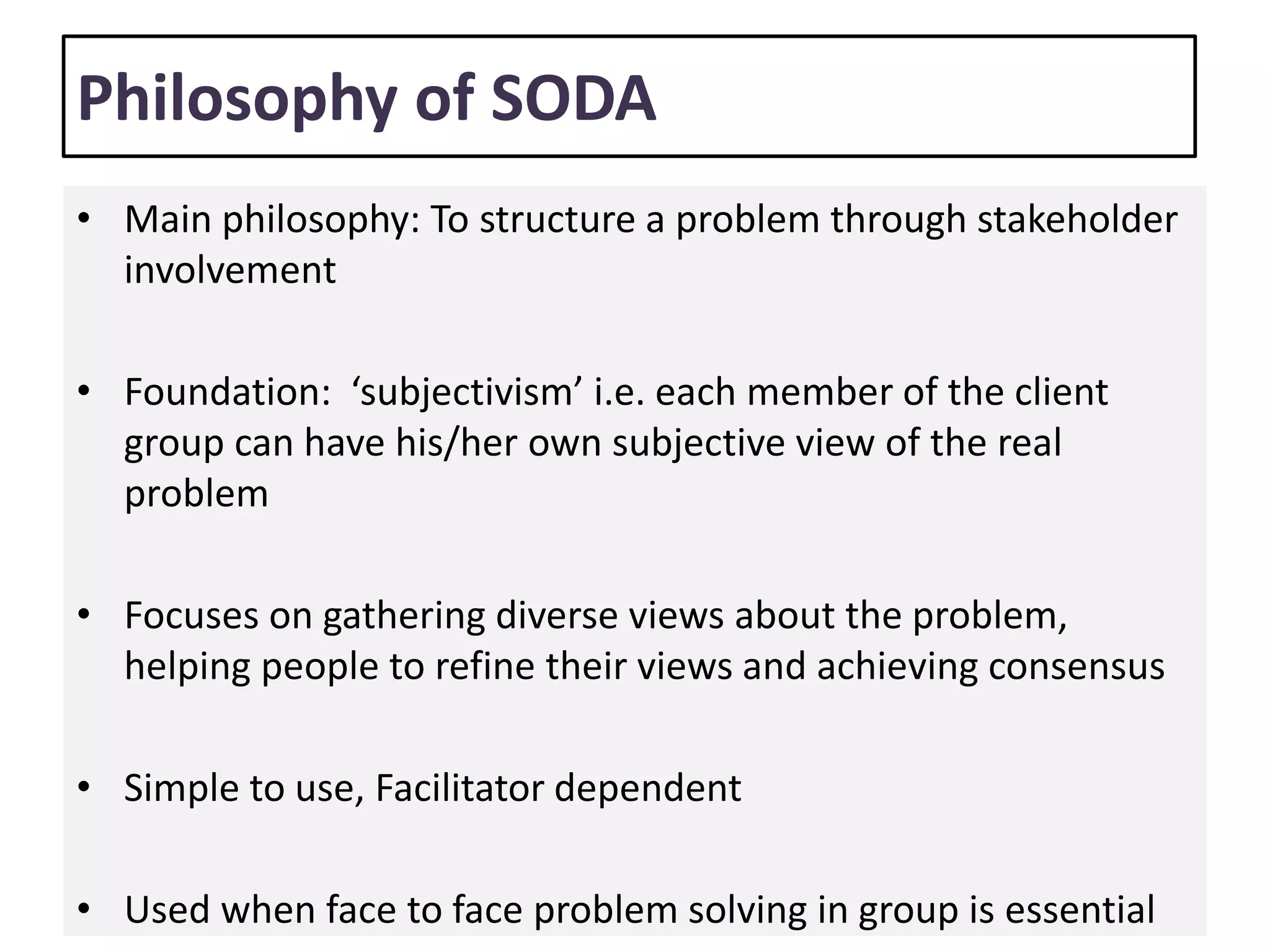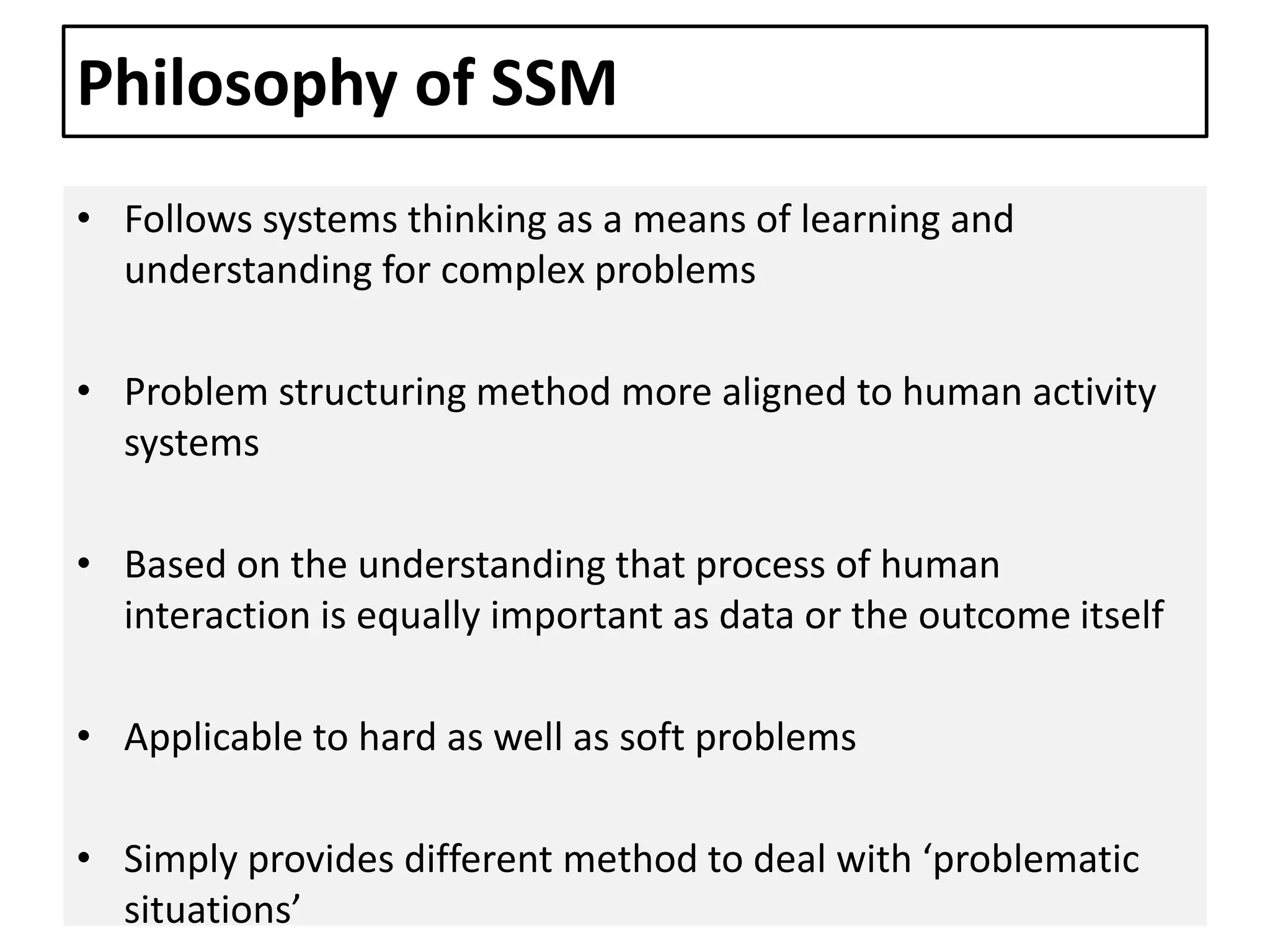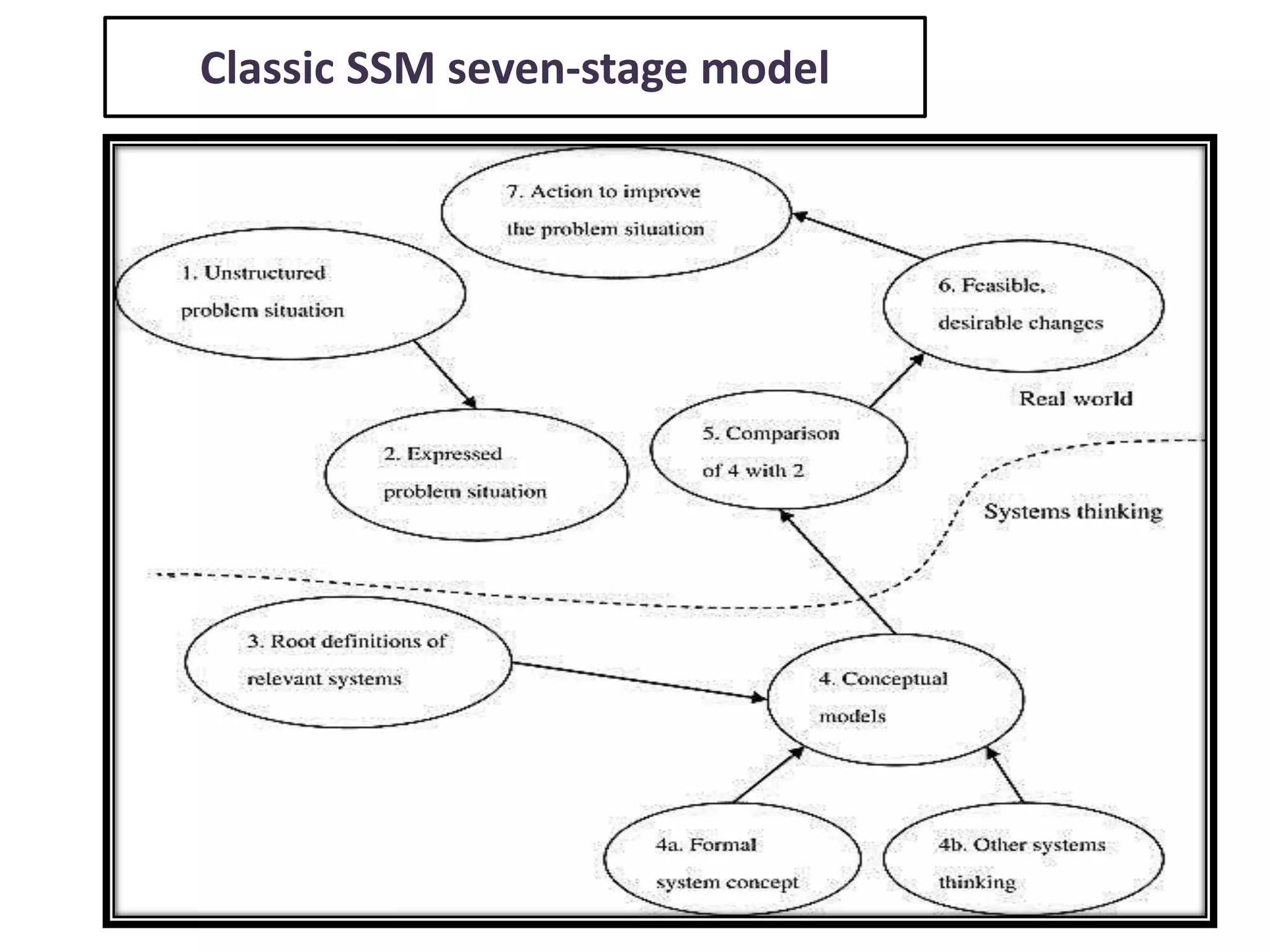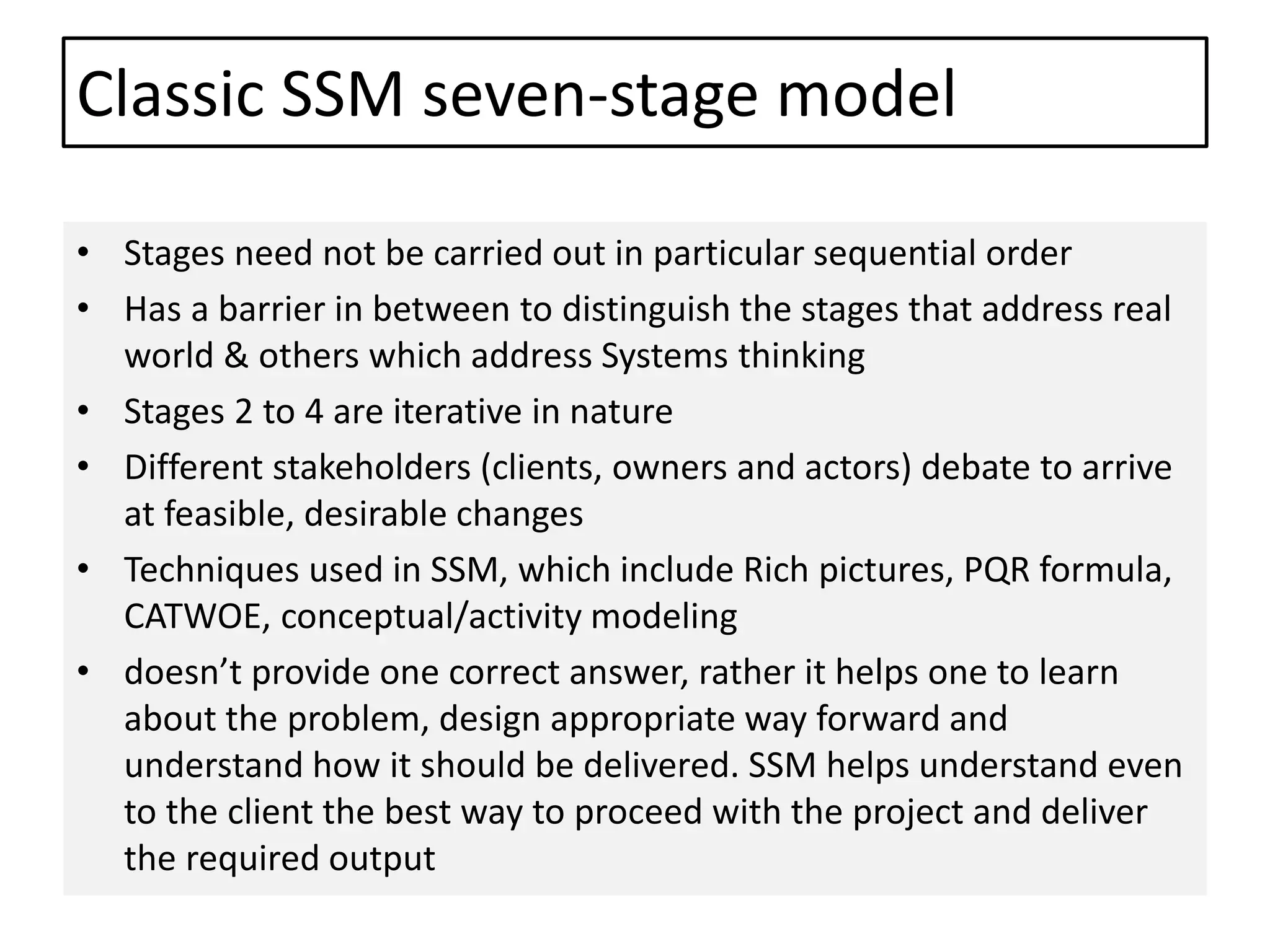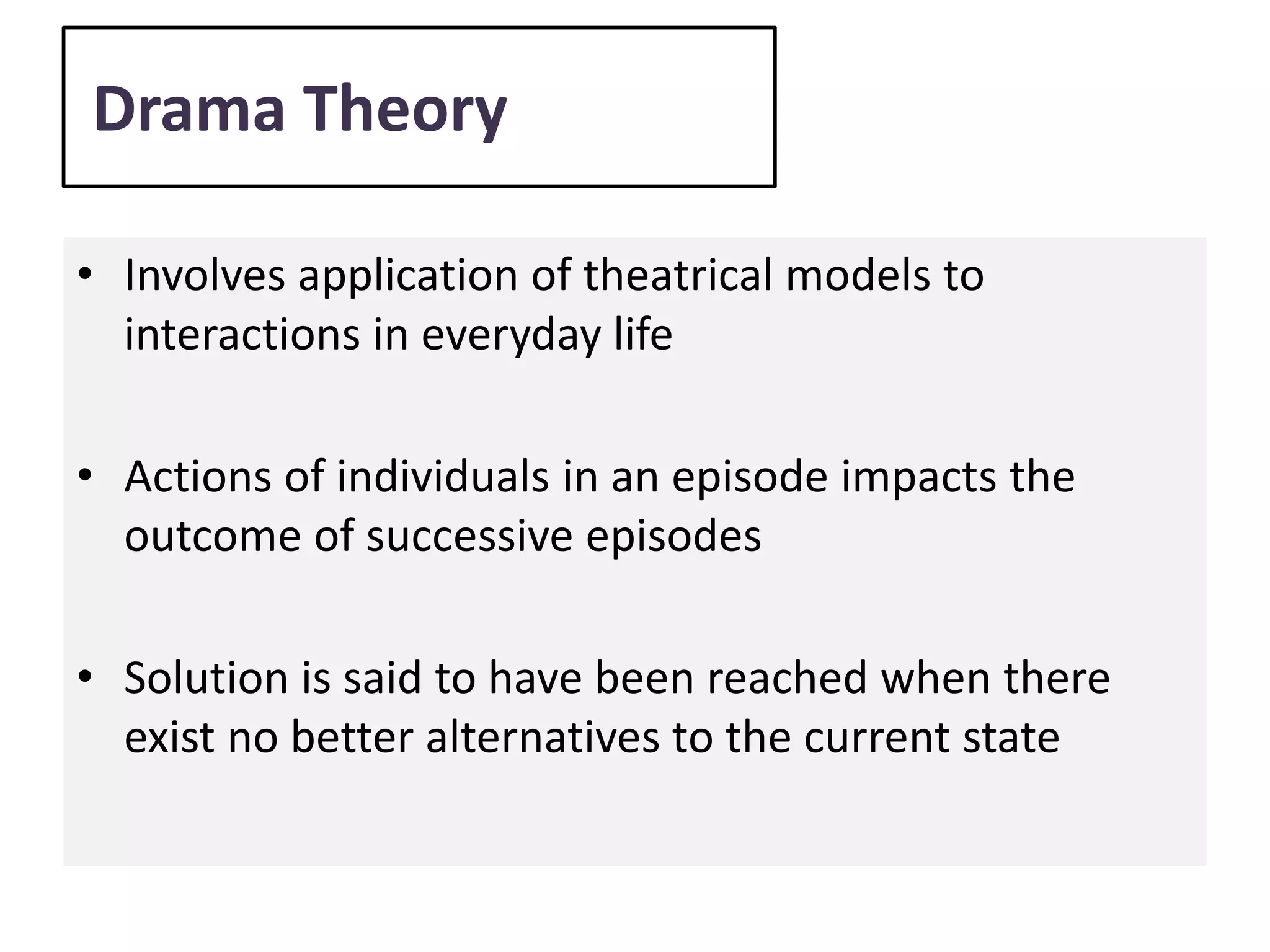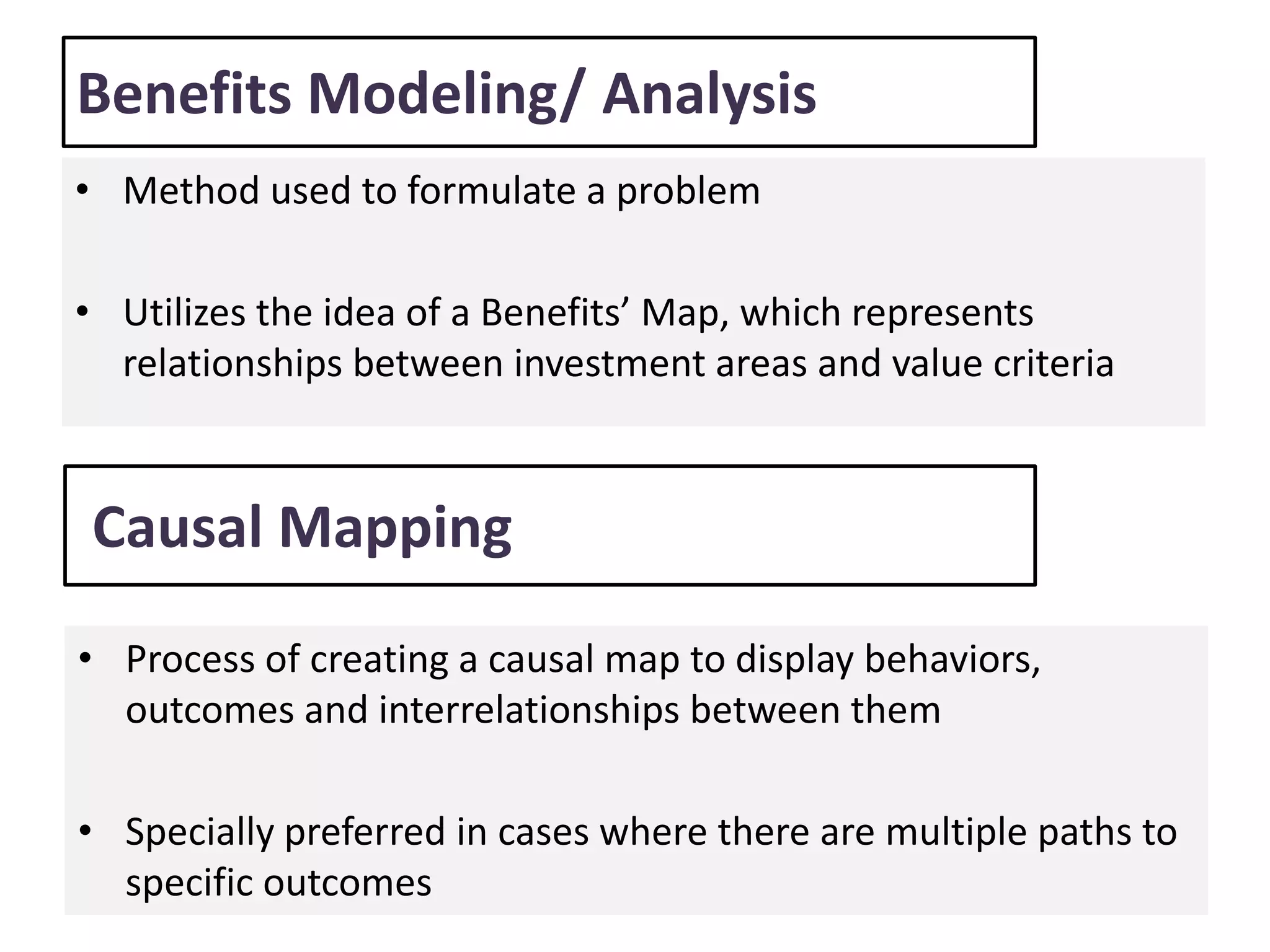This document discusses and compares hard operations research (OR) and soft OR. Hard OR uses quantitative methods like linear programming for well-defined problems, while soft OR is used for more uncertain, complex problems with multiple decision-makers. Soft OR methods include strategic options development and analysis, soft systems methodology, theory of constraints, causal mapping, scenario planning, and benefits analysis. These are qualitative, facilitator-based approaches that account for different stakeholder perspectives.
